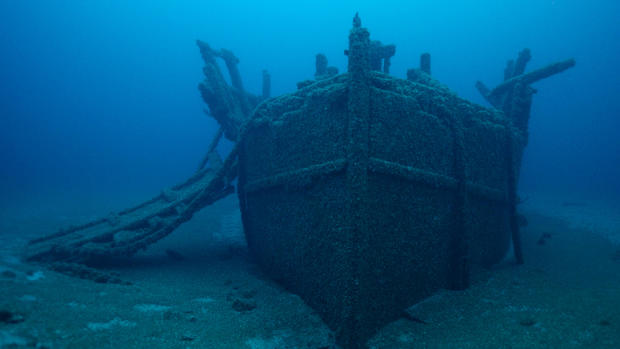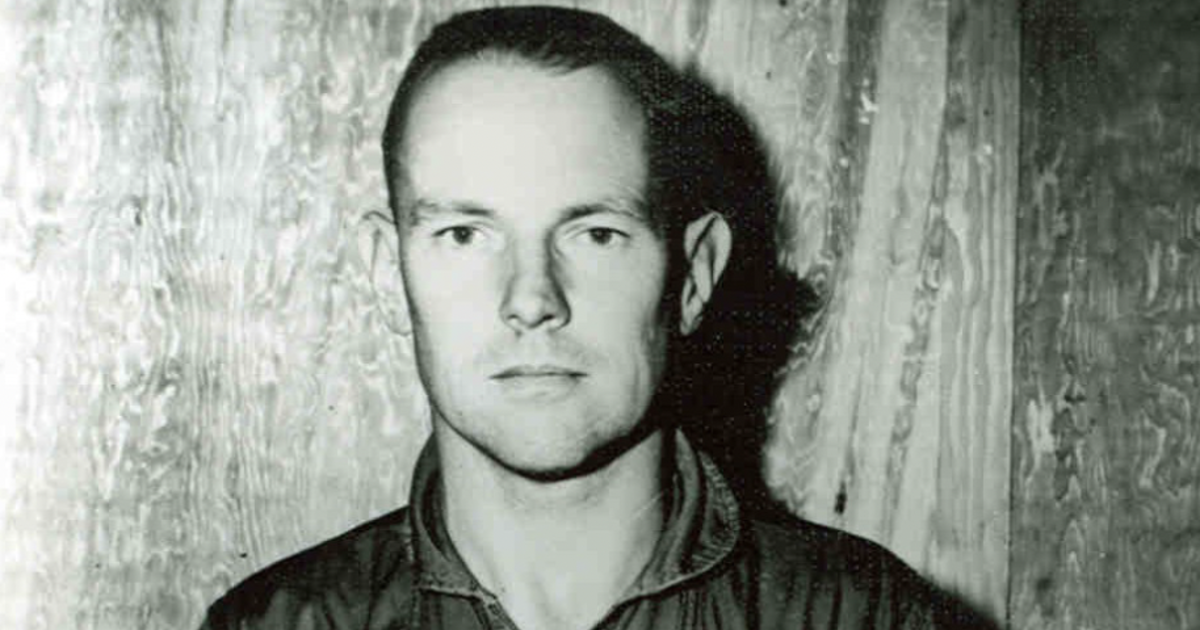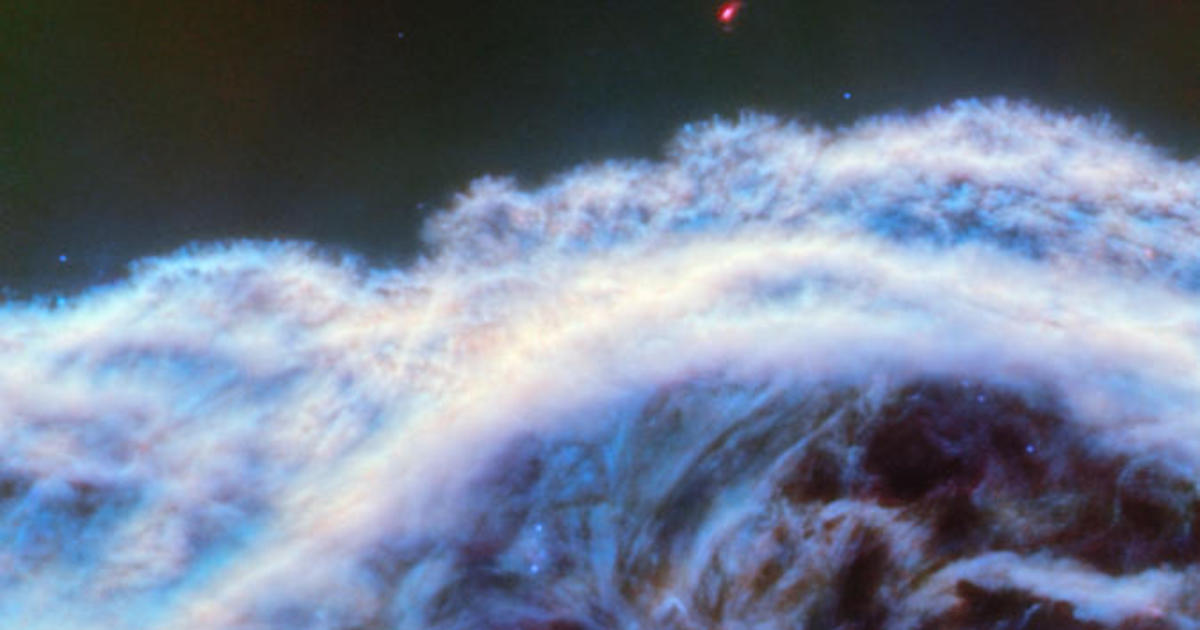Filmmakers expecting "to find a pile of rocks" in Lake Huron discover ship that vanished with its entire crew in 1895
Documentary filmmakers using a remotely operated vehicle to search the lakebed of Lake Huron said they found the wreck of a ship that disappeared 128 years ago, losing its entire crew.
The ship has been identified as the Africa, which was built in 1874 and sank two decades later while traveling from Ashtabula, Ohio to Owen Sound, Ontario, according to a news release announcing the find. The Africa was towing a barge, named the Severn, and both vessels were carrying coal during the fateful trip in 1895. The towline connecting the vessels was cut by a powerful snowstorm, and the Severn ran aground. Its crew was rescued. However, the Africa was never seen again, and its 11 crewmembers were never found.
The documentary filmmakers, Yvonne Drebert and Zach Melnick, started investigating the lakebed when scientists doing an offshore fish survey in the area noticed an "anomaly on their sonar readout," according to the news release. The husband-and-wife team specialize in underwater videography using remotely operated vehicles, according to the release. The vehicle they use is "one of only a handful like it in the world," with an ultra-low-light high resolution camera system.
Drebert said that she and her husband "expected to find a pile of rocks," but when they sent their remotely operated vehicle nearly 280 feet underwater, they quickly saw a "huge structure" that "loomed up from the depths."
Melnick had been piloting the vehicle from a control station in the boat's cabin, so he, Drebert and others on the boat saw what the robot was seeing in real-time.
"We couldn't believe it," Melnick said.
The ship was encrusted in invasive quagga mussels, which carpet the lakes and have damaged wrecks in the area. The couple's documentary, "All Too Clear" studies the impact these mussels have on the area. While the quaggas are a risk to the wrecks, they do make such underwater explorations possible, Drebert said.
"There are so many quaggas filtering the Great Lakes, that the lakes are up to three times as clear as they were before the mussels," Drebert explained. "The quaggas are the reason we're able to see the shipwreck in almost 300 feet of water without any additional lights. But they're also responsible for making wreck identification in the Great Lakes incredibly difficult."
Working with a local historian and a marine archaeologist, the team was able to identify the ship. The remotely operated vehicle made another dive to measure the vessel and look for identifying clues. The second dive found that the wreck matched the length, width and height of the Africa, and around the vessel was coal, just like the Africa had been carrying when it sank.
The footage from the discovery will be featured in the couple's documentary.
"Before discovering the Africa, our work focused on the ecological impacts of the mussels – which have devastated fisheries around the lakes. We hadn't considered the effect they could have on our cultural heritage," said Melnick, "but the mussels have truly changed everything in the deep waters of the Great Lakes."







